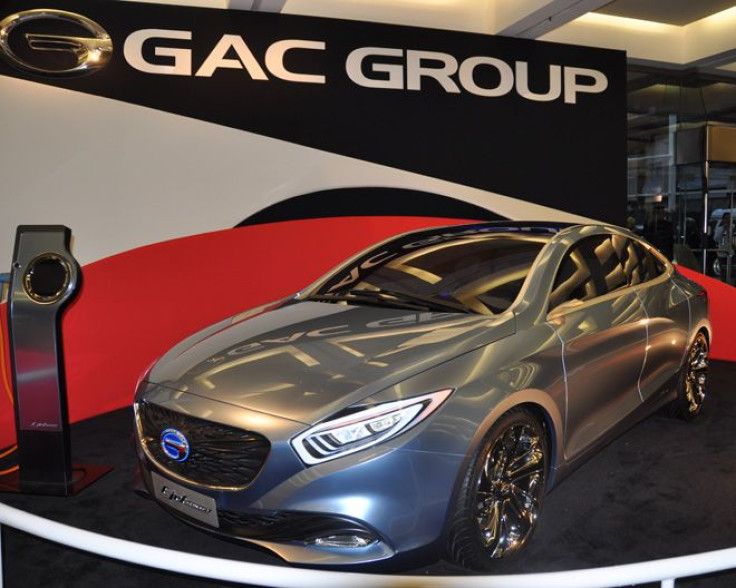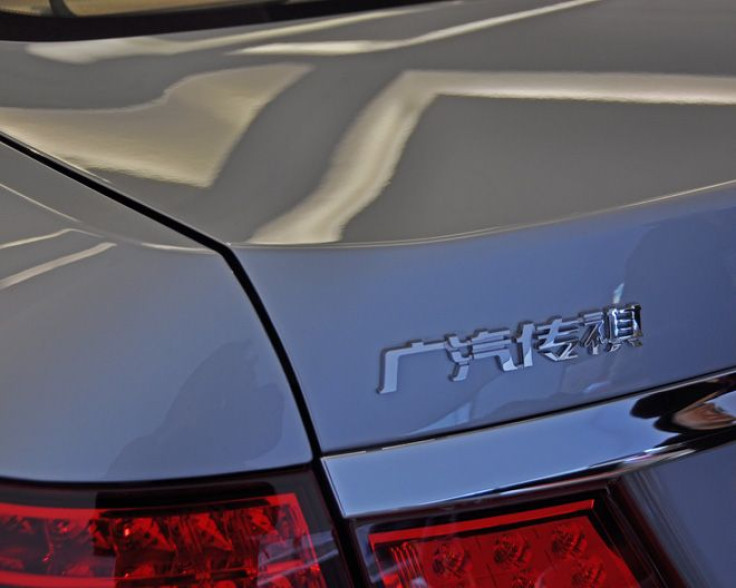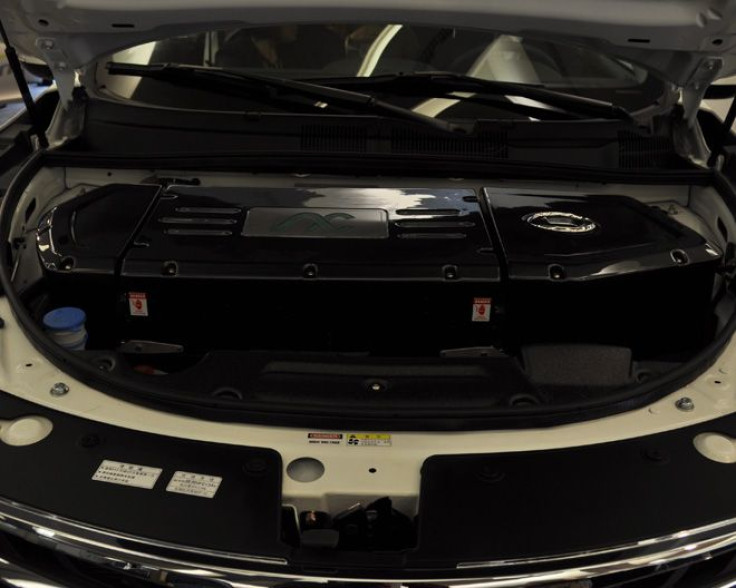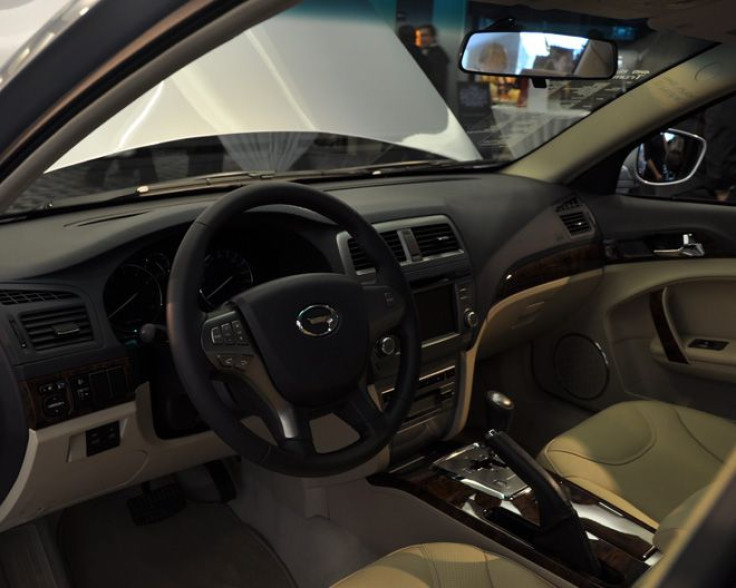2013 Detroit Auto Show: Chinese Auto Giant GAC Is Showing Its Own Cars, Albeit On The Fringes [PHOTOS]

DETROIT -- Like a group of players camped outside a castle hoping someday to enter the comity happening inside, Guangzhou Automobile Group Co., Ltd. (HKG:2238) made its first appearance at the North American International Auto Show in Detroit this year without actually being inside the main hall -- a blessing in disguise of sorts for China’s sixth-largest automobile manufacturer.
“This booth’s place is much better than any others, in a more noticeable location,” Huang Xiangdong, vice president of the automotive group, said in reference to GAC’s position near one of the main entrances where car enthusiasts have to pay to go in.

Headquartered in the southern coastal Chinese automotive manufacturing center that bears its name, GAC is showing for the first time in Detroit and is one of the Chinese auto giants hoping to soon begin exporting cars in the global market. Already a major manufacturer of auto parts and autos for other brands for the domestic market, GAC is the third Chinese automaker to show up at the Detroit show with its own wheels in tow.
In 2005, Geely Automobile Holdings Ltd. (HKG:0175) of Hangzhou, which bought Volvo Car Corporation from Ford Motor Company (NYSE:F) in 2010 for about $1.3 billion, was the first Chinese auto manufacturer to appear at the Detroit show. Three years later, BYD Auto Co., Ltd. of Shenzhen, which exports its cars to the Middle East, Africa and South American markets, made its Detroit debut.

Sticking to the major presentations of the Detroit show this year -- with hybrids galore -- GAC displayed what it says is the first electric/fuel all-wheel drive sedan, the Trumpchi 4WD, and its new GS5 BEV five-door electric SUV, with a 35 kWh battery that provides a meek 100-mile range and comes with an 18 kWh charger that the company says will recharge the vehicle in about two hours. It also displayed a concept car: the eye-grabbing NEV E-Jet extended-range hybrid electric sedan the company claims will be in production by the latter half of the year.

GAC Group launched the Trumpchi brand in December 2010, just two years after breaking ground on its facilities and three months after it began rolling out its 500 Trumpchi Sedan in time to be displayed at the 2010 Asian Games. In March of last year, the group launched the Trumpchi GS5 sport utility vehicle. Both cars are based on the Alfa Romeo 166 platform. The first cars were wracked with quality problems, as well as the formidable task of luring domestic buyers away from tried and true foreign marques. But the company says it’s moving forward with plans to export up to 5,000 cars this year, targeting emerging markets in South America, Eastern Europe and the Middle East.

All Chinese automakers are vying to build export markets, but they face considerable challenges that have made Chinese autos little more than a novelty at the auto shows. Quality is the most obvious consideration. Chinese consumers themselves are wary; GAC sold only 17,000 vehicles in the first year of its production in 2011; it had hoped for a very modest 30,000.
Huang declined to say when he expected GAC to deliver cars to the U.S. market, but Wang Xia, director of the autos division of the China Council for the Promotion of International Trade, was willing to provide a highly optimistic estimate while emphasizing GAC’s efforts to learn from other automakers, especially with regards to meeting higher regulatory standards required in Western markets.
“We are out there looking at what others are doing, building partnerships,” he said after GAC’s official presentation on Tuesday. “In five years, we would like to see Chinese cars in the U.S. market.”

Chinese manufacturers certainly have plenty of guidance to help them along, considering how much they do for other carmakers to sell to the world’s largest auto market in terms of both production and consumption.
GAC has partnered with Toyota Motor Corporation (NYSE:TM), Honda Motor Co Ltd (TYO:7267) and Mitsubishi Corp (TYO:8058). The company also has a massive presence in the market for auto parts both at home and abroad. And on Tuesday, the company signed a preliminary deal with Chrysler Group LLC and its Italian parent Fiat S.p.A. (PINK:FIATY) to manufacture Jeeps in China for the Chinese market.

Peering under the hood of the GS5, a market analyst for General Motors Company (NYSE:GM) says the GAC vehicles on display in Detroit show a marked improvement over vehicles made in the past.
“The quality is better. Five years ago you would cut your fingers on the sharp edges of the metal of the body (beneath the hood). But these cars are definitely an improvement of what I’ve seen in the past,” he said. “But, of course, are these vehicles representative of the typical car, or were they prepared for this show? They have come a long way, but I think they have longer to go before they meet expectations, at least in the North American and European markets.”
With all of the experience this and other Chinese companies have developed making cars for other auto giants, it’s a matter of when rather than if GAC will emerge on the global market. It could take years, but considering China’s pace, probably not decades.
© Copyright IBTimes 2024. All rights reserved.












